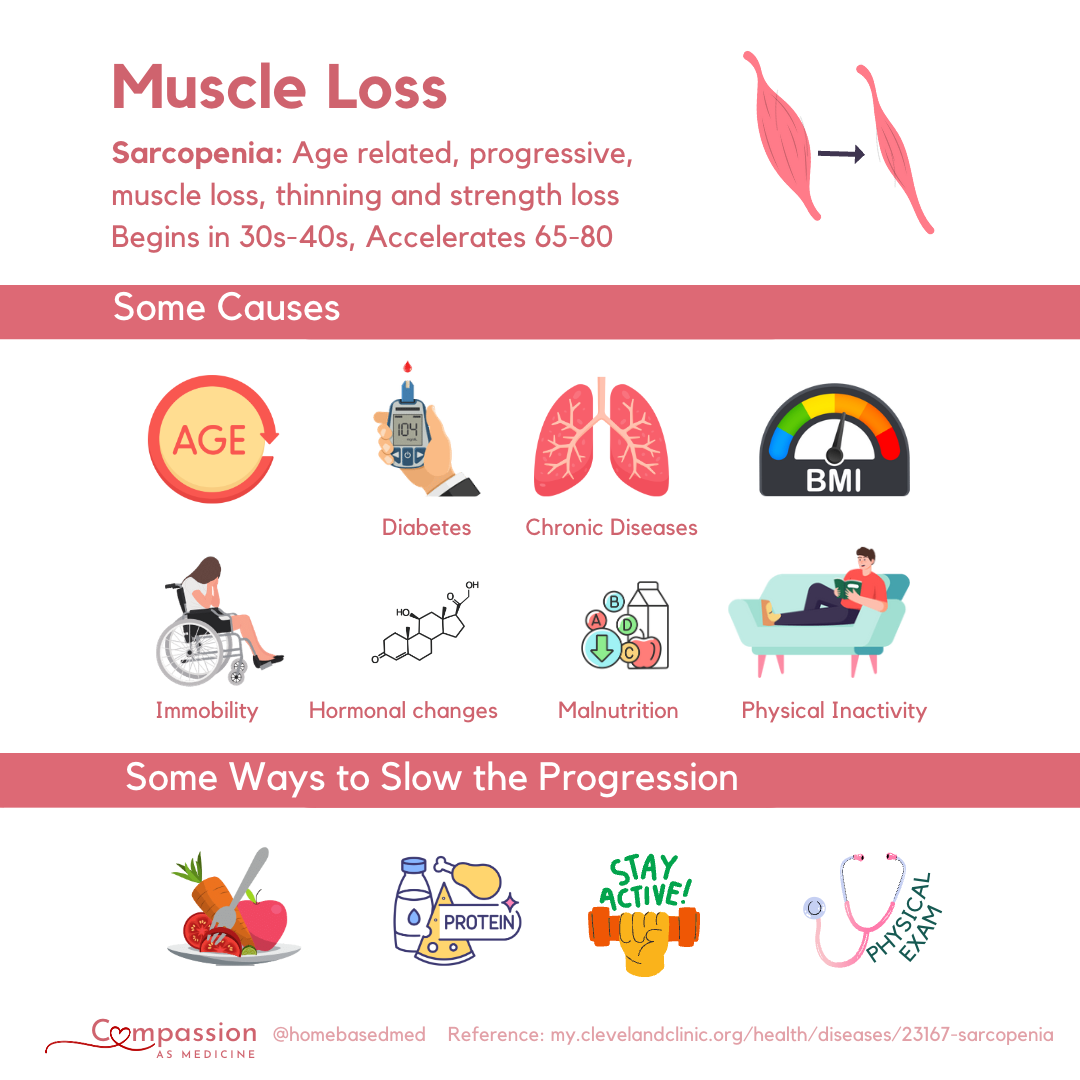650-360-9309

Our bodies naturally lose muscle mass, strength, and function as we age. This condition is called muscle loss or Sarcopenia. It affects up to 50% of those over 80 and about 10% of those over 50 years old. In addition, chronic diseases like cancer, heart disease, and diabetes can cause muscle loss. It involves the progressive decline of muscle mass, strength, and function. As a result, it can significantly impact overall health and quality of life. For example, those with Sarcopenia can experience decreased mobility, increased fall risk, and difficulty with daily activities.
Our bodies naturally lose muscle mass and function as we age. Having a sedentary lifestyle, not exercising, and having disused muscles can accelerate the loss of strength in older adults. Cancer, diabetes, lung disease, and heart disease can cause muscle wasting and loss. Lack of nutrition and insufficient protein intake can cause muscle loss, as protein is crucial for maintaining muscle mass. A decrease in growth hormone and testosterone production can further contribute to muscle loss in older adults. Slowing down muscle loss by eating a healthy diet and exercising is possible. Medical professionals and registered dietitians can also recommend managing and slowing muscle loss. We can prioritize lifestyle choices and seek professional guidance to maintain muscle mass and function as we age. For accurate and up-to-date information on managing muscle loss, consult reputable journals and websites. Stay active, eat various healthful foods, and seek professional advice to keep your muscles healthy.
Regular exercise and physical activity, particularly resistance training or weightlifting, build muscle mass and improve strength in older adults. Staying active through walking, swimming, and cycling can also preserve muscle mass and function. The key to managing muscle loss is adequate protein in a balanced diet. Plant-based protein sources, including beans, lentils, tofu, and quinoa, are excellent for older adults. In addition, vitamin D and B12, calcium, magnesium, and protein are also essential for maintaining muscle health. A registered dietitian or nutritionist helps develop a personalized meal plan to meet older adults’ protein and nutrient needs.